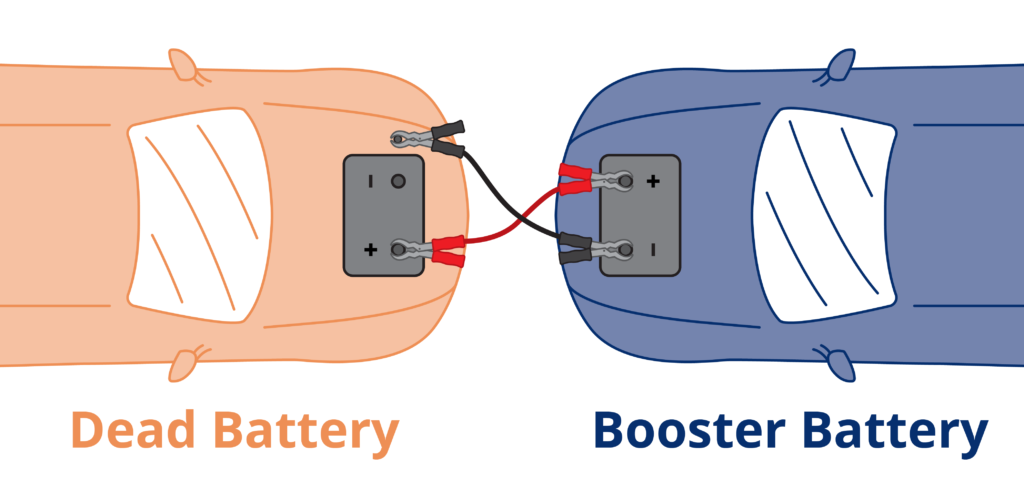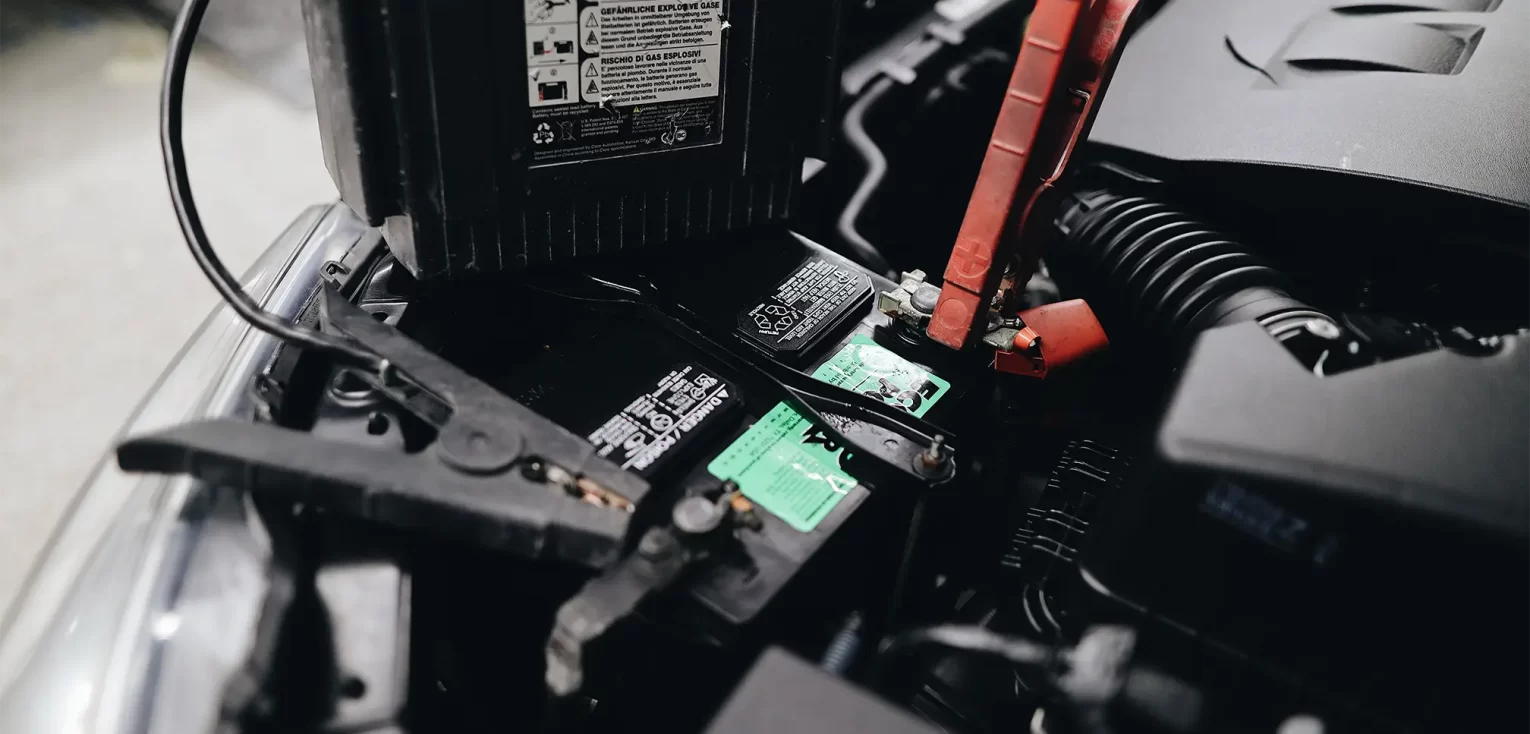As a driver, every so often you may find yourself needing to jump start a car battery. Sometimes a dead battery is caused by something simple, like forgetting to turn off the headlights. Sometimes the battery is aging and losing the ability to hold a charge. Whatever the case, if you need to jump a car battery, don’t panic. You do want to exercise caution because there are ways you can hurt yourself or your car, but overall, it’s pretty easy to do.
What You’ll Need:
- Jumper cables (sometimes called booster cables)
- A booster car (a car with a working battery)
Position the Booster Car
There are jump starters you can keep in your car for emergency situations, but in most cases, you’ll probably be using a second car to start your battery (the booster car). Before starting, you want to make sure the booster car is close enough to your car so the jumper cables can reach. You can park the cars either beside each other or facing each other. Make sure there’s enough space between the cars so that they’re not touching.
Turn Off Both Vehicles
Once the booster car is in position, make sure both cars are turned off and the emergency brakes are in place. Turn off the radio, headlights, interior lights, and any other accessories that are pulling a charge from the battery.
Locate the Battery
Most car batteries can be located under the hood. Some older models have the battery positioned in the trunk or under a seat. If you’re not sure where your battery is located, you can consult the owner’s manual.
Once you locate your battery, look for signs of corrosion. If either battery has a white or green substance on the terminals, you can remove this with a brush. Do not touch it with your hands as it may harm your skin. If either battery is cracked or leaking, do not proceed with the jump.
Attach the Jumper Cables

Assuming both batteries are in good condition, you can then start connecting the jumper cables. It’s important to connect these cables properly to avoid injuring yourself or damaging one of the cars. Do not let the metal clamps touch each other while you are connecting the cables to the batteries.
- Start by connecting the red (or positive +) cable to the dead battery’s positive terminal.
- Next, connect the other end of the red (positive +) cable to the booster battery’s positive terminal.
- Third, connect the black (or negative -) cable to the booster battery’s negative terminal.
- Finally, connect the black (or negative -) cable to an unpainted, metal portion of the car with the dead battery. You do not want to connect it to the dead battery itself. Some cars come with a grounding bolt marked with a negative sign (-) that you can connect the cable to.
Ensure that the cables are not near any moving engine parts in either car and double check the cable placement before proceeding.
Start the Booster Car
Once all of the cables are properly connected, start the booster car’s engine. It’s a good idea to wait for a few minutes so the booster car can charge up the dead battery.
Start the Car with the Dead Battery
Try to start the car with the dead battery. If it doesn’t work at first, you may need to wait a few more minutes for the battery to charge. You should also check the batteries for any corrosion. Sometimes that can prevent the charge from passing through the cables.
Disconnect the Cables
Once the car with the dead battery is running again, you can disconnect the cables. You should disconnect them in the opposite order of how you connected them. Be careful while disconnecting them since the engines will be running.
- Start by removing the black (negative) cable from the grounding bolt or other metal surface of the jumped car.
- Next, remove the black (negative) cable from the booster battery.
- Then, remove the red (positive) cable from the booster battery.
- Finally, remove the red (positive) cable from the jumped battery.
Drive Your Vehicle for at least 20 Minutes
After you’ve jumped your car, you should drive it around for at least 20 minutes so that the alternator can charge up the battery. When you park it, pick a safe place that’s easy to reach in case you need to jump it again. If your car needs to be jumped again in a short timeframe, you should bring it to a mechanic to run diagnostics on your battery and look for other issues.
What if your car doesn’t start?
Cars that won’t start after a jump are probably having a different issue. If you hear a clicking noise, it may indicate a problem with your alternator. You may have blown a fuse, the starter connection may be faulty, or you may need to replace your battery.
Can you jump a hybrid or EV?
Both hybrids and EVs are built differently than gas-powered cars and they each have two kinds of batteries. While it’s possible to jump a hybrid or an EV, it’s often best to bring it to a mechanic instead.
Call Restored Auto, LLC for help
If you run into issues with your car’s battery, or if the starter or alternator aren’t working, call Restored Auto, LLC. We can test your battery to check its health, run diagnostic testing on your car to locate the issue, and make any necessary repairs so you can get safely back on the road. Call us today to schedule an appointment.

